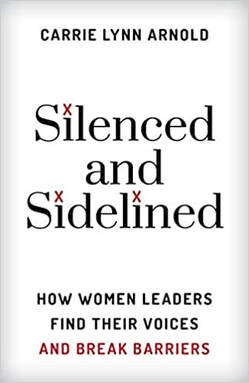|
The first answer may not be the real answer. Leaders in the workforce wrestle with provocative questions like:
Nothing is more uncomfortable than an outfit that digs into the gut, pinches the toes, or swallows you whole. Based on Northouse’s last count, there are 63 different theories of leadership. There are dozens of competencies, skills, and behaviors attached to those theories that range from ‘action oriented’ to ‘written communication.’ I liken it to a large walk-in closet stuffed with clothes. When leaders emulate what others define as effective, they may be trying on too many things with few the right fit. We only feel like ourselves when we wear things that hang on our frame in flattering ways. To find the right fit, we can try on a bunch of different outfits, or we can simplify by taking down our personal measurements and then styling our frames based on actual data. When it comes to leadership, don’t just describe your style, vision, and strengths using generic labels and lists of competencies. It is no longer appropriate to say you are a good listener or a good public speaker. Listening and talking are no longer refined enough labels. It is like telling a stylist you like to wear shirts and pants. Some things are naturally assumed. It is also not okay to describe your style, vision or strengths using language you think others want to hear. If you say you are a strategic thinker but then spend all your time as a leader managing and measuring the work, you may have borrowed a strength that is truly not your own, while underplaying something else that is significant. I am noticing many leaders fail to know the essence of their leadership. They do not have the descriptors or expressions to articulate how they lead and what it looks like when they are at their best. They want to be effective but it is not a ‘want’ that has led them to take action regarding self-knowledge. Knowing yourself is the beginning of all wisdom - Aristotle There are dozens of leadership assessments, style personalities, leader profiles, values exercises, and various indexes out on the market. Each can give you deeper insight into self. Almost every one of my readers has taken a least one if not many of these instruments. What have you done with those results? Dust them off and find patterns and phrases that help you get clarity on your style, vision, and strengths. Your coach is a good place to go for support with this work?
How well do you know your leadership? What language do you use when describing it to others? Northouse, P. G. (2013). Leadership theory and practice (6th ed.): Sage Publications. |
Carrie Arnold, PhD, MCC, BCCIn no particular order: Author | Dog mom | Speaker | Reader | Mom to human offspring | Wife | Lover of Learning | Leadership coach & consultant, The Willow Group | Faculty for Evidence-Based Coaching at Fielding Graduate University
�
Categories
All
|
The Willow GroupCarrie Arnold, PhD, MCC
|
Silenced and Sidelined: How Women Leaders Find Their Voices and Break Barriers
|
|
© 2020 The Willow Group, LLC





